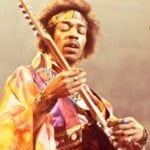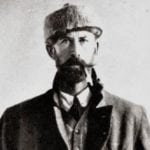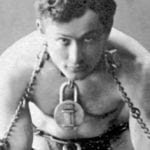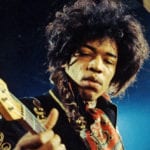 Animals
Animals  Animals
Animals  Weird Stuff
Weird Stuff 10 Weird Things People Used to Do at New Year’s
 Our World
Our World 10 Archaeological Discoveries of 2025 That Refined History
 Weird Stuff
Weird Stuff 10 Fascinating Facts You Might Not Know About Snow
 Miscellaneous
Miscellaneous Top 10 Things Crypto Was Supposed to Change & What Actually Did
 History
History 10 Huge Historical Events That Happened on Christmas Eve
 Music
Music 10 Surprising Origin Stories of Your Favorite Holiday Songs
 History
History 10 Less Than Jolly Events That Occurred on December 25
 Weird Stuff
Weird Stuff 10 Funny Ways That Researchers Overthink Christmas
 Politics
Politics 10 Political Scandals That Sent Crowds Into the Streets
 Animals
Animals 10 Species That Refused to Go Extinct
 Weird Stuff
Weird Stuff 10 Weird Things People Used to Do at New Year’s
 Our World
Our World 10 Archaeological Discoveries of 2025 That Refined History
Who's Behind Listverse?

Jamie Frater
Head Editor
Jamie founded Listverse due to an insatiable desire to share fascinating, obscure, and bizarre facts. He has been a guest speaker on numerous national radio and television stations and is a five time published author.
More About Us Weird Stuff
Weird Stuff 10 Fascinating Facts You Might Not Know About Snow
 Miscellaneous
Miscellaneous Top 10 Things Crypto Was Supposed to Change & What Actually Did
 History
History 10 Huge Historical Events That Happened on Christmas Eve
 Music
Music 10 Surprising Origin Stories of Your Favorite Holiday Songs
 History
History 10 Less Than Jolly Events That Occurred on December 25
 Weird Stuff
Weird Stuff 10 Funny Ways That Researchers Overthink Christmas
 Politics
Politics 10 Political Scandals That Sent Crowds Into the Streets
10 Crusading Journalists Who Died Under Mysterious Circumstances
Journalists who expose corruption or criticize their countries’ governments can be beaten, thrown in jail, or even murdered. According to the Committee to Protect Journalists, an independent nonprofit group that fights to protect journalists and freedom of the press, 764 journalists have been murdered worldwide since 1992. Many of these murders, including those in peaceful and developed countries like the US, have never been solved.
10 Duong Trong Lam

Duong Trong Lam was a Vietnamese-American journalist who had been living in California when he launched the Cai Dinh Lang, a pro-communist newspaper that made him many enemies in the Vietnamese-American community. Lam’s paper only lasted a year, but it caused enough outrage that he routinely received phone calls and letters threatening his life. At one point, a man even pulled a gun on Lam’s sister and told her to leave the country.
One morning in July 1981, Lam was fatally shot after leaving his San Francisco apartment. Nobody had seen Lam’s assailant, but witnesses reported seeing one or two Asian men running away from the scene. Initially, police were skeptical that Lam’s politics had anything to do with his murder. They believed Lam was shot over a dispute, possibly because he owed somebody money. Even after the Associated Press received an anonymous letter that stated Lam was killed for his political views, investigators continued to insist that Lam’s newspaper had nothing to do with his death.
Over the course of the decade, four more Vietnamese-American journalists were murdered under mysterious circumstances. Although these four men weren’t communists like Lam, the FBI began to speculate that their murders were connected to his.
All five journalists were active in the Vietnamese exile political scene, and two of them had incurred the wrath of the National United Front for the Liberation of Vietnam, a shadowy group of anticommunist exiles who advocated overthrowing the government of Vietnam. Although the Front had been suspected of carrying out the five journalists’ murders, the FBI never found sufficient evidence to convict anybody. The case was closed in the 1990s.
9 Paul Guihard
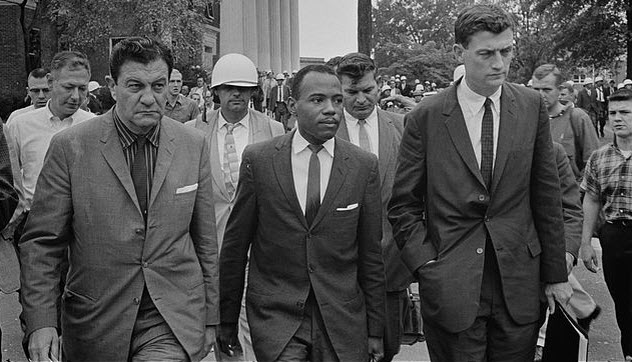
French journalist Paul Guihard was the only reporter killed during America’s civil rights movement of the 1960s. Although he was stationed in New York, Guihard was moved to Mississippi to cover the Ole Miss riot of 1962.
On September 30, 1962, a protest erupted at the University of Mississippi after James Meredith, a black Korean War veteran, was accompanied by federal marshals to enroll at the school. The angry mob of segregationists assaulted the marshals, but the marshals fought back with tear gas. During the chaos and confusion, hundreds of people were injured. Guihard and another man named Ray Gunter were killed.
While Gunter was killed accidentally, Guihard’s murder was deliberate. His body was discovered near a dormitory around 9:00 PM, about 20 minutes after he left the company of a photographer. He had been shot in the back from less than 30 centimeters (12 in) away. The FBI was unable to find a suspect or even a single witness. All they knew was that somebody had noticed Guihard wasn’t from the South. This person might have led Guihard away from the crowd and shot him.
To date, Guihard’s murder has never been solved. American officials attended his funeral in New York on October 5, and President John F. Kennedy gave a personal apology to the paper where Guihard worked. In 2009, a memorial bench for Guihard was set up on the University of Mississippi’s campus by the school’s Society of Professional Journalists.
8 Walter Liggett

One of the most successful third parties in American history, Minnesota’s left-leaning Farmer-Labor Party dominated the state’s politics during the 1920s and 1930s. Initially formed by socialists in 1918, the party was a popular alliance between farmers and urban workers that elected three governors and four senators before it merged into the Democratic Party in 1944.
Floyd B. Olson, Farmer-Labor’s first governor, represented the party at the height of its power from 1931 to 1936. While Olson was popular for a number of reforms, including some welfare programs and the establishment of a minimum wage, critics charged that he was a corrupt dictator who had no sincere interest in the working class. One of these critics, journalist Walter Liggett, would later die under mysterious circumstances.
Liggett, the editor of a radical, muckraking journal called the Midwest American, charged Olson with betraying the Farmer-Labor Party’s interests. He claimed that Olson and other party leaders had ties to organized crime, especially gangsters Kid Cann and Meyer Schuldberg. The administration tried to buy Liggett off with a state position, but he refused to back down. For years, Liggett was plagued with libel suits, bribes, and even a phony charge of kidnapping a 16-year-old prostitute. At one point, he was assaulted by some men working for Kid Cann.
In 1935, a right-wing reporter named Howard Guilford was shot to death after he wrote about Olson’s underworld connections. Nobody was ever convicted for Guilford’s murder. But Liggett believed that the identity of the culprit was obvious, so he decided to escalate his campaign against Olson.
On December 5 of that same year, Liggett was killed in a drive-by shooting in front of his wife and daughter. Although Liggett’s wife and other witnesses identified Kid Cann as the shooter, Cann wasn’t convicted because he had an alibi. While others have suggested that another gangster might have been the shooter, it seems likely that the hit was ordered by someone with power in the Farmer-Labor Party, perhaps even Olson himself.
7 Mikhail Beketov

Mikhail Beketov was a Russian journalist and environmental activist who wrote a series of articles that criticized a government plan to destroy parts of the Khimki Forest to build a highway connecting Moscow and Saint Petersburg. After calling for the Khimki mayor to step down from office in May 2007, Beketov’s car was torched and his dog was found beaten to death on his doorstep. Despite these threats, Beketov refused to be silenced.
On November 13, 2008, Beketov was beaten by two unknown men outside his home in Khimki. Using iron bars, they attacked Beketov so savagely that his right leg and four of his fingers had to be amputated. He also sustained major brain damage, lost his ability to speak, and became confined to a wheelchair. Five years later, he died after going into cardiac arrest. The heart attack had been triggered after Beketov choked while eating lunch, which was partially the result of the deep tracheal scarring he suffered from his beating.
By the time of Beketov’s death, police had already closed the investigation of his assault. They neglected to listen to any witnesses and never bothered to look at surveillance videos that might have caught footage of Beketov’s attackers. Although Beketov had once warned that the Khimki government should be suspected if anything happened to him, authorities dismissed the charge, claiming that there was no evidence to implicate anybody in the administration with Beketov’s attack.
6 Ruben Espinosa
On the evening of July 31, 2015, the bodies of Mexican journalist Ruben Espinosa and four women, including his friend Nadia Vera, were discovered in an apartment building in Mexico City. Espinosa and Vera had returned to the building earlier that evening.
Vera was roommates at the apartment with two of the other female victims, Yesenia Quiroz and Mile Virginia Martin. Alejandra Negrete, the final victim, was the apartment’s cleaning lady. Although reports varied about the exact nature of the murders, each of the five victims had been killed with a single shot to the head.
Both Espinosa and Vera, a notable social activist, had moved to Mexico City after experiencing problems in their former home of Veracruz. Espinosa had previously been followed and watched by strangers while Vera’s house had once been broken into and searched while she wasn’t home. Eight months before her murder, Vera gave a TV interview criticizing Veracruz governor Javier Duarte and his administration. Espinosa was also a critic of Duarte, writing articles and giving interviews about the routine abuse that journalists endured in the state.
As the murder investigation unfolded, nothing traced back to Duarte or his government. On August 4, police arrested Daniel Pacheco Gutierrez, one of three men seen leaving the apartment on the day of the murders. Pacheco admitted going to the apartment to have sex with Yesenia Quiroz but said that he knew nothing of the murders.
According to Pacheco’s account, he and his two accomplices, Abraham and Omar, had gone to the apartment for a few hours and then left. After hearing about the murders two days later, Pacheco reported the news to Abraham and Omar, who also professed ignorance over the killings. Abraham and Omar were later identified and arrested, although Omar has joined with Pacheco in denying any involvement in the murders.
5 Jill Dando
During the second half of the 1990s, English television presenter and journalist Jill Dando was one of the BBC’s best-known personalities. She was the host of numerous TV shows, including Crimewatch, a documentary series that presents dramatic reconstructions of unsolved murders. Ironically, Dando became the victim of an unsolved murder herself, with her murder showcased on Crimewatch in two different episodes.
On April 26, 1999, Dando was fatally shot by an unidentified man on her home’s doorstep in Fulham in southwest London. With little evidence, police contemplated all sorts of strange theories. She might have been killed by an ex-boyfriend or a vengeful criminal who had been caught after being featured on Crimewatch. Some even thought that she might have been murdered by a Serbian hit man in retaliation for a NATO bombing that had happened in Belgrade three days earlier.
Eventually, their attention focused on Barry George, a local man who was obsessed with celebrities, guns, and women. George was a lonely stalker with a collection of 4,000 photographs he had taken of women he saw on the streets. He claimed that he was the cousin of Freddie Mercury and allegedly held a grudge against the BBC because he believed they covered his “cousin” too negatively.
Despite his insistence that he was innocent, George was initially convicted of Dando’s murder in 2001 based on flimsy evidence about a speck of gunpowder residue found in his pocket. On August 1, 2008, after a second appeal, George was exonerated and released from prison. The residue in his pocket, the court reasoned, might have come from somewhere else. Furthermore, the murder weapon had never been recovered, and George had been ruled intellectually incapable of being able to carry out the crime.
4 Jagendra Singh
Jagendra Singh was a freelance Indian journalist and blogger who had been active in Hindi-language media for over 15 years. During the last few months of his life, Singh made several critical Facebook posts about Ram Murti Verma, a state minister of Uttar Pradesh. Singh accused Verma of profiting from the state’s illegal sand mining as well as illegal land grabs.
On April 28, 2015, Singh’s foot was broken when he was attacked by a group of men he believed to be working for Verma. A few weeks later, Singh noted on Facebook that “Ram Murti Singh Verma can have me killed. At this time, politicians, thugs, and police are all after me. Writing the truth is weighing heavily on my life.”
What happened next has been a matter of debate. According to a statement made by Singh on his deathbed in early June, four or five police officers showed up at his house on the first day of the month and attacked him. They had earlier told him to stop writing about Verma and were now determined to teach him a lesson. Tossing gasoline across Singh’s body, the policemen set the reporter on fire, severely burning about 60 percent of his body.
Before his death a week later, Singh gave a personal account of the attack on video, in which he also identified his attackers. Local police, however, claimed that Singh set himself on fire. When the Committee to Protect Journalists questioned the local superintendent, he replied that Singh had tried to commit suicide after police came to arrest him for murder, although the superintendent was unable to provide any information on that crime.
3 Dmitry Kholodov
In only two years as a reporter, Dmitry Kholodov had become one of the best-known investigative journalists in Russia after the collapse of the USSR. Before his death, Kholodov had been investigating incidents of illegal arms trafficking involving officials in the Russian military. Believing that he was on the verge of a crucial breakthrough, he was set to give his findings to the Russian parliament.
On October 17, 1994, an anonymous source called Kholodov and told him that a briefcase containing the information he was seeking could be found at the Kazanskaya railway station in Moscow. After Kholodov returned to his office with the briefcase, he opened it and immediately triggered a booby-trapped bomb. The explosion was so strong that it killed him and injured one of his colleagues.
As the first journalist killed in post-Soviet times, Kholodov’s murder provoked a national outcry. Some 5,000 people showed up at his funeral and chanted for the resignation of Pavel Grachev, a defense minister whom Kholodov had suspected of involvement in arms trafficking. Six Russian servicemen allegedly connected to Grachev were charged with Kholodov’s murder, but they were let go after the Moscow Military District Court ruled that there was insufficient evidence and motive to tie them to the crime.
2 Georgy Gongadze
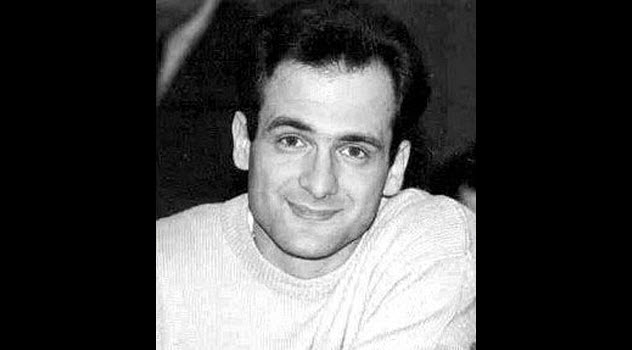
In November 2000, the decapitated body of Georgian-Ukrainian journalist Georgy Gongadze was discovered by some farmers in a forest 160 kilometers (100 mi) away from Kiev. Gongadze, an opponent of the Ukrainian government and then-president Leonid Kuchma, had gone missing two months earlier. Kuchma denied having anything to do with Gongadze’s death, but audio tapes later surfaced of Kuchma and other government officials discussing how they could deal with the troublesome journalist.
The government claimed that the tapes were fake, but then a presidential guard officer named Major Nikolai Melnychenko came forward to say that he was the one who had secretly recorded Kuchma’s conversations. In 2004, Viktor Yushchenko succeeded Kuchma as Ukraine’s president and ordered a new investigation into Gongadze’s murder. As a result, two police colonels were arrested for the crime in March 2005. Yurki Kravchenko, one of the officials heard on the Melnychenko tapes, was also suspected and asked to testify in court.
However, Kravchenko was found at home with two bullets in his head only one day before he was supposed to testify. His death was ruled a suicide, but many thought it was suspicious that Kravchenko had died before he could release any information. In March 2008, the two policemen and another officer were convicted of Gongadze’s murder and given prison sentences between 12 and 13 years. Still dissatisfied, Gongadze’s family believes that the trial was flawed and that the men who ordered the murder are still walking free.
1 Danny Casolaro
Danny Casolaro was an American novelist and amateur journalist who spent the last year of his life investigating what he called “the Octopus,” an international conspiracy involving a group of intelligence agents, the Reagan administration, and a trafficking software program called PROMIS.
One of Casolaro’s sources was Michael Riconosciuto, who was involved in the Inslaw Affair. Inslaw, the developers of PROMIS, had created the program for use by the Justice Department. However, Inslaw later accused the Justice Department of stealing PROMIS and illegally selling it to foreign intelligence agencies.
According to Riconosciuto, the Justice Department had given a political figure named Earl Brian the right to sell PROMIS after his role in the “October Surprise,” another conspiracy theory in which Ronald Reagan and members of his administration allegedly bribed Iran to release the 52 Americans taken hostage in 1979. Riconosciuto claimed that he reprogrammed PROMIS so that the US could spy on intelligence agencies that bought the program.
On August 10, 1991, Casolaro was found dead in a hotel room in Martinsburg, West Virginia. He was lying naked in the bathtub with slit wrists. Authorities ruled it a suicide, but Casolaro’s friends and family suspected that he was killed for his investigation of the Octopus. Casolaro had told them earlier that he was supposed to meet with an informant at his hotel room.
However, Casolaro never said who this informant was or what kind of information he had. Some have suggested that the man killed Casolaro and stole his notes, none of which have ever turned up. Others believe that the information given to Casolaro was such a letdown that the journalist destroyed his papers and decided to commit suicide.
A day after Casolaro’s death, The Village Voice received a mysterious phone call. The anonymous caller told the paper’s editor that Casolaro, whom the caller said was investigating the October Surprise, was dead. This call occurred before Casolaro’s death was reported to his family and the media.
Tristan Shaw runs a blog, Bizarre and Grotesque, where he writes about unsolved murders, paranormal phenomena, and other weird and creepy things.



